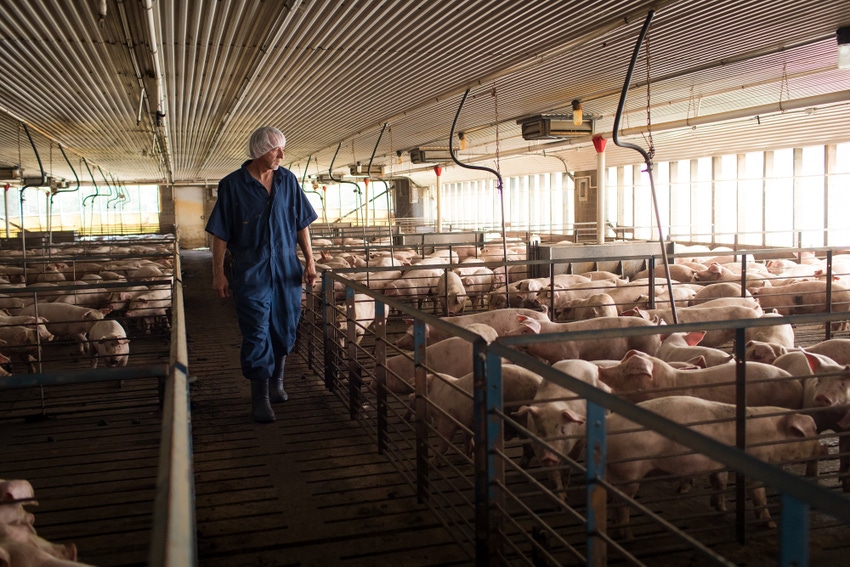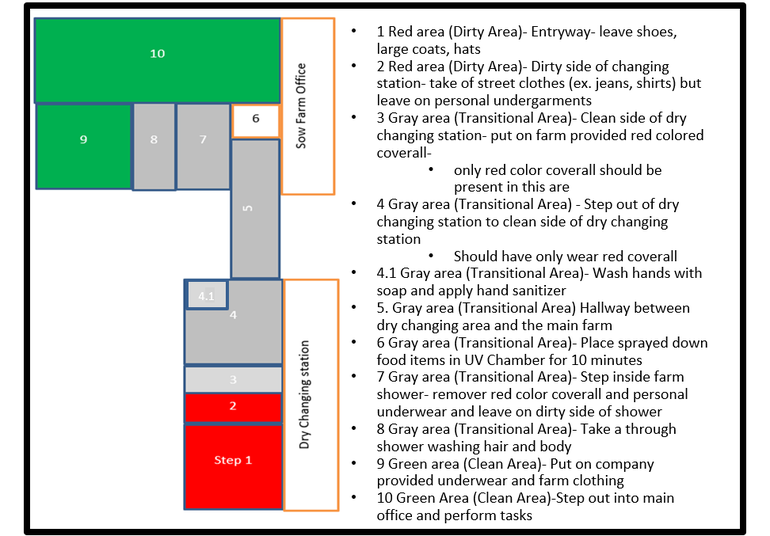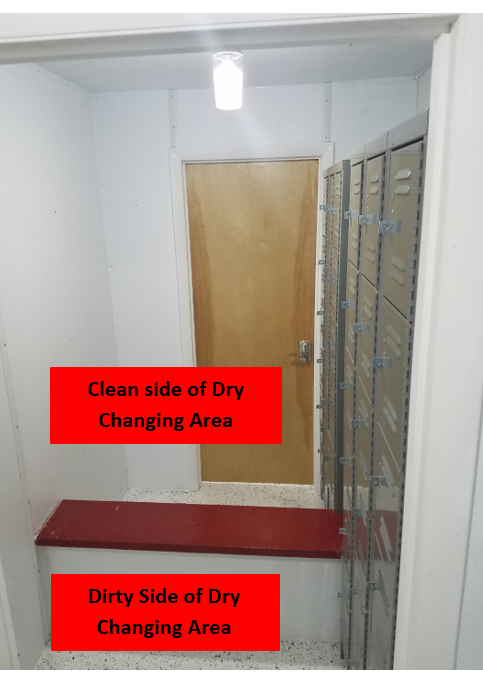Redesigning the farm entry to enhance biosecurity
Events with high likelihood for pathogen introduction are associated with people or supply entry, animal load out and manure pumping.
January 26, 2021

As swine pathogens continue to evolve, swine producers and veterinarians are constantly working on improving farm biosecurity protocols in order to prevent the introduction of harmful pathogens. These can be devastating for the health of the swine population and can result in huge economic losses for the producers. The heart of an effective biosecurity program is the adoption of standard protocols and a proactive mindset, thus maintaining disease prevention at the forefront of farm activities.
When swine producers encounter a disease outbreak, they reach out to veterinarians to perform an epidemiological disease outbreak investigation. The major objective of performing epidemiological disease outbreak investigations is determining the route of pathogen introduction, implementing the proper corrective measures and recommending follow-up enhanced biosecurity recommendations that will reduce the risk of future outbreaks. From my experience in performing these outbreak investigations, I have found that the events rated with high likelihood of being responsible for pathogen introduction are associated with people or supply entry, animal load out, and manure pumping.
In this article, I will focus on describing how producers can decrease the introduction of harmful pathogens and enhance their biosecurity measures by redesigning the farm employee entrance to include an additional dry changing room. The risk of introducing a disease exponentially increases with the number of entries into a farm. To put things into context, consider the following example. On a 6,000 head sow farm with 20 employees, there are at least 140 employee entries a week, 610 entries a month, and 7,300 entries per year. It is clear to see that the opportunities for pathogen introduction into the farm can pile up.
For this reason, the goal of this dry changing area is to reduce the pathogen introduction through potentially contaminated street clothes and provide a transitional area between the dirty side of the farm entrance and clean side of the farm shower room. It is an extra step that physically forces employees to remove their street clothes—sources of possible contamination— in order to keep these items further away from farm clothing. This dry changing room can be accomplished by attaching a 10x20 building to the existing office (Picture 1).
Picture 1. Dry changing room

In the entrance to the dry changing room, I recommend placing a bench for shoe removal and hooks for large coats and outerwear. In the dirty side of the dry changing room, personal street clothes except undergarments are to be removed and stored in an assigned locker. A ledge should divide the dry changing room and serve as a physical line of separation before entering the clean side of the dry changing room (Picture 2).
Picture 2. Ledge divides dry changing room to serve as physical line of separation

After stepping over the ledge, employees are now on the clean side of the dry changing area. In this area, there is another locker in which farm specific color-coded coveralls and crocs are provided. My personal preference is red color overalls as red color naturally draws attention. These color-coded coveralls are specific to this area and can only be worn in this area. A laundry area is added to the clean side of the dry changing area to only wash these color-coded coveralls.
Coming out of the dry changing room on the clean side, there is a hallway that connects to the shower rooms. In the hallway, I recommend installing a sink and a hand sanitizing station so that employees can wash and sanitize their hands before going to their shower room. Employees would then have access to the pass-through area where their personal items (such as lunches) would be disinfected and placed in a clear plastic storage container. These containers are to be transferred to the end of the hallway and put in the UV chamber. At this point, the employee can now enter the “dirty-side” of the shower, leaving behind the color-coded coveralls, slippers, and under-garments. After a thorough shower, employees will put on the designated farm-specific clothing.
Implementing this entire process into the farm entry adds a total of two extra minutes to the employees’ shower routine, but it is a small price to pay in exchange for the prevention of widespread herd disease and economic loss. It is important to recognize that preventing pathogen introduction into farms does not have to be extravagant or costly in order to be effective at keeping disease introduction at bay. This enhanced biosecurity measure can easily be incorporated with the adjustments as described. Targeting employee entry leaves one less route of pathogen exposure into the farms, leading to a reduced likelihood of having to deal with the costly consequences that come with a disease outbreak.
Source: Attila Farkas, DVM, Carthage Veterinary Service, who are solely responsible for the information provided, and wholly own the information. Informa Business Media and all its subsidiaries are not responsible for any of the content contained in this information asset. The opinions of this writer are not necessarily those of Farm Progress/Informa.
You May Also Like



